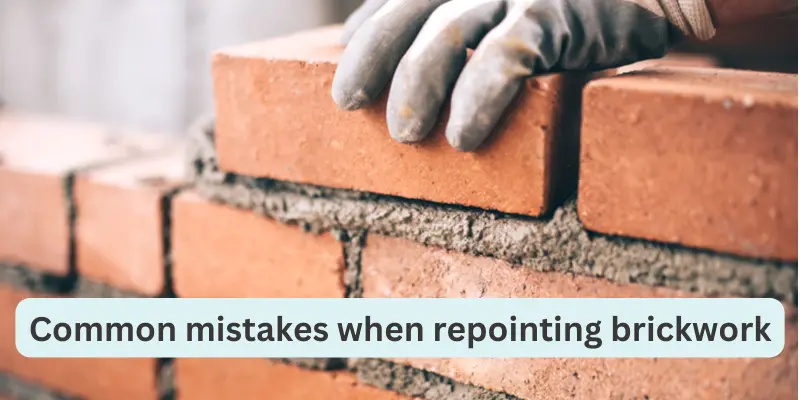Common Mistakes in Brickwork Repointing: An In-Depth Guide
Greetings, fellow brick enthusiasts! we embark on a journey to understand, master, and maybe even enjoy the process of renewing those mortar joints. So, grab your tools and let’s dive into the comprehensive guide of common mistakes and expert tips for successful brickwork repointing.
Understanding Repointing: Definition and Importance
First things first, what exactly is repointing? Repointing is the process of renewing the external part of mortar joints in brickwork. It’s crucial because over time, weather and decay can wear down these joints, impacting the strength and integrity of your walls.
Impact of Pointing on Wall Strength: Key Considerations
Now, why does pointing matter so much for your wall’s strength? Well, think of it like the glue holding everything together. If your mortar joints are weak or deteriorating, it puts extra stress on the bricks and, over time, can lead to structural issues. Not something we want to deal with, right?
Repointing 101: A Step-by-Step Guide for Success
Repointing, also known as pointing for existing buildings, becomes necessary when the mortar between bricks or other forms of masonry starts to deteriorate due to age, weather, or physical/chemical damage. If the property is old or listed, check for Planning Permission before commencing work.
Avoid the mistake of brushing off loose mortar and skimming with a thin layer of new mortar, as it won’t fully adhere or withstand weathering effects. To repoint correctly, remove old mortar to a depth of 12-19mm, or around 2x the width or height of the joint.
Avoid using disc saws for joint cleaning, as they can damage brickwork. Exercise care to prevent damage to bricks during repointing preparation. Inspect and damp down the wall before starting work.
Always wear protective gear, including safety glasses, dust mask, gloves, and ear defenders if using power tools. Match the joint shape and style to the old pointing, especially for Listed Buildings. Use specialized tools like a pointing gun for simple joint styles or hire a trained professional for intricate styles.
Ensure new mortar doesn’t overfill joints; remove excess as you work. For large areas, limit the work area to a safe height reachable with a pointing trowel and a hand-held mortar board. Complete finishing before the mortar sets too hard.
Avoid repointing in winter if possible due to frost risks; if necessary, protect against rain and wind during cold weather work.
Expert Advice and Pro Tips for Effective Repointing
Choosing the Right Mortar Mix for Brickwork Repointing
Choosing the right mortar mix is crucial for ensuring the long-lasting durability and structural integrity of your project. Unfortunately, many DIYers fall into the trap of opting for a mix that is overly strong. This mistake can result in water infiltration issues and, subsequently, cause additional harm to the bricks.
Preventing Water Infiltration during the Repointing Process
Ensuring that moisture is kept away from the bricks is essential for preserving the overall stability and durability of a structure. A frequent error made by homeowners during brick repointing is neglecting issues related to water infiltration. When it comes to brick chimneys, a key culprit of water infiltration is often the flashing.
When undertaking the repointing of brick chimneys, it’s crucial to meticulously examine the flashing for any indications of damage, such as rust, loose or missing nails, and gaps between the flashing and the brick. Additionally, don’t forget to consider the significance of ‘weep holes’ in the brickwork, as they play a vital role in allowing any trapped moisture to escape.
